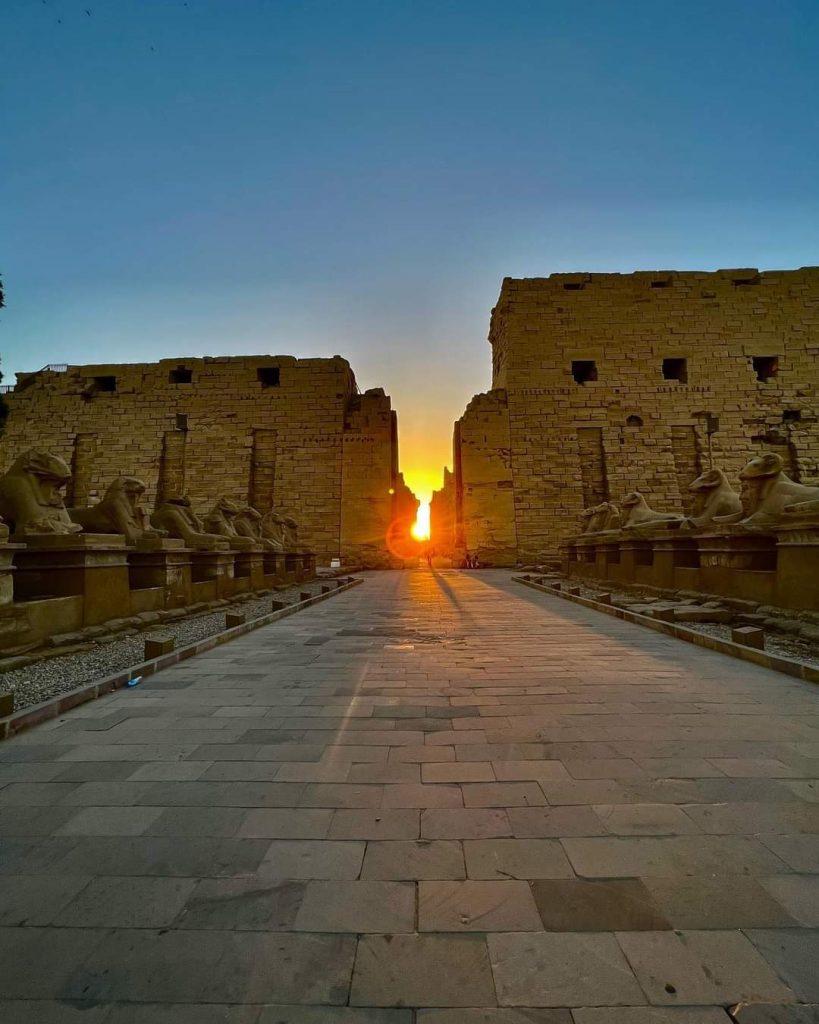Archaeologists have excavated a tomb from Egypt’s Middle Kingdom, between 2040 and 1782 BC, whose entrance faces the solstice sunrise. We explore how different civilizations have marked the year’s shortest day.
How did Egyptians celebrate the solstice?
During the Winter Solstice, the Ancient Egyptians celebrated by decorating their homes with lush plants such as palm leaves and branches
Winter Solstice at ancient Egypt.
In modern times, for many people, the solstice means dark evening commutes and all-too-brief days. But over the course of human history, the day marking the shift from shortening days to lengthening ones has carried a wide range of meanings in different cultures.
We were reminded of how significant the solstice has been—and still is—in human history by a news-making discovery from archaeologists from the University of Jaén and Málaga in Spain. The team recently excavated a tomb in Egypt that proved to be the oldest in recorded history. But more interestingly, the tomb has a chapel oriented directly to the winter solstice sunrise.
Located near the city of Aswan in southern Egypt, the tomb is part of an extensive cemetery from Egypt’s Middle Kingdom, between 2040 and 1782 BC. Many of the other graves in the burial area are aligned to the summer or winter solstice. “The winter solstice was one of the most important moments of the solar cycle in ancient Egypt, announcing the beginning of its rebirth and culminating in the summer solstice.” The archeologists who worked in the tomb wrote. By building tombs this way, they continued, ancient Egyptians “ensured a connection between the architecture of a sacred space and the rhythm of the cosmos.”
For example.
Here at Karnak on the Day before Winter Solstice 🌞
Winter Solstice is an Amazing time of year, made even more special by the majestic Temple of Karnak. For thousands upon thousands of years ancient Egyptians have paid tribute to gods Amun, Mut and Khonsu – as well as keep vigil over this most wondrous astronomical event when days start getting longer again!
At Karnak on Winter solstice night we can still feel a sense that all our ancestors were doing something incredible here.. celebrating life itself in unity with nature’s rhythm.
The Temple of Karnak is an ancient Egyptian temple complex located in Luxor, Egypt. It was dedicated to the gods Amun, Mut, and Khonsu and esoterically consecrated to the principle of organic creation.
The temple was built over a period of more than 2000 years, with the oldest parts dating back to the Middle Kingdom (2040-1750 BCE).
It is not clear what specific events or ceremonies took place at the Temple of Karnak on the winter solstice, as this information is not well documented. However, it is known that the ancient Egyptians paid close attention to the movements of the sun and the stars, and it is likely that the winter solstice, which marks the shortest day of the year and the beginning of winter, was an important event in the Egyptian calendar. It is possible that the temple was used for various religious ceremonies and rituals related to the winter solstice.
It is also possible that the temple’s alignment with the sun played a role in the winter solstice celebrations. The temple was built to align with the movements of the sun, and it is thought that the main temple axis was oriented towards the sunrise on the winter solstice. This alignment may have been used to mark the winter solstice and to mark the beginning of the new year.
Today, the Temple of Karnak is a popular tourist destination and is known for its impressive size and grandeur. Visitors to the temple can see the remains of its many columns, chapels, and obelisks, as well as its massive hypostyle hall, which is considered one of the largest in the world. Despite its age, the temple remains an important cultural and architectural site and is a testament to the ingenuity and creativity of the ancient Egyptians.


